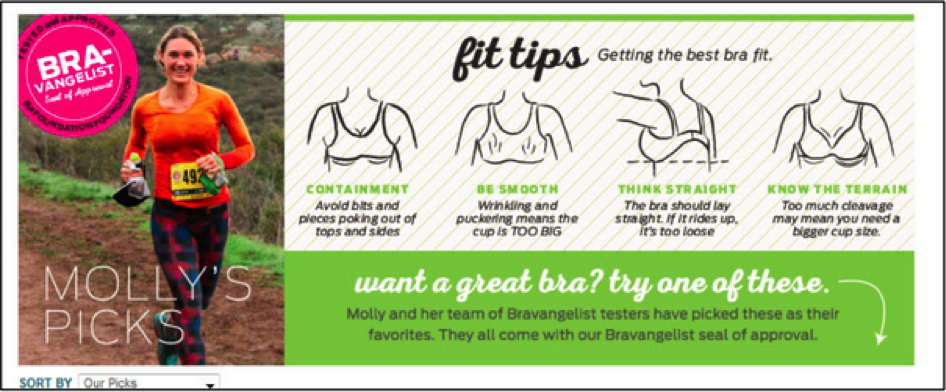Content is king, so Bill Gates famously declared back in 1996 in a prescient paper predicting how the Internet would revolutionize, among other things, the publishing industry. But for eCommerce providers, content can sometimes feel like, a taskmaster that demands a great deal from its subjects but gives little back in return.
Brands are spending more on content than ever, but they still struggle to track let alone justify the return on their content investments. In many ways, they can’t afford not to. Content is crucial to describing brands and their products, helping shoppers choose and use them, and providing shoppers opportunities to engage and reengage with the brand.
Over the next 12 months, 50 percent of brands surveyed by the Content Marketing Institute said they planned to increase their spending on content, while 9 percent said they planned to increase it significantly. At the same time, 23 percent reported they felt their campaigns were less than successful, 9 percent said they were not successful at all, and 21 percent said they had no idea because they didn’t track their content campaigns.
The result of so much uncertainty about content’s effectiveness is that content has become undervalued. Content is key to building brand affinity, and brand affinity is about the most valuable thing there is in a world where the top 10 merchants in the Internet Retailer Top 500 list gobbled up 51 percent of the total revenue. For anyone who’s counting, that leaves the remaining 490 merchants (not to mention others aspiring to join their ranks) fighting over the remaining 49 percent. Those odds aren’t great. So brands need to focus on content that most effectively engages consumers, improves their shopping experiences and builds affinity with their brand.
Here’s three ways to master content.
Focus on visuals. The better merchants can tell the stories of their products, the better they’re going to sell. And the best way to tell stories on the Internet is visually. Use rich, compelling imagery to tell a brand’s story and the provenance of its products. Continue that focus with image-centric product guides, which dovetail with the fastest growing social media sites as Tumblr, Pinterest, Instagram and Snapchat, all of which are supremely visual.
One of the best types of visual content for eCommerce is the product video. Nothing beats video’s ability to convey a huge amount of information quickly and compellingly. Nearly 17 percent of shoppers watch product page videos and those that do are 1.6x more likely to purchase, according to video commerce expert Invodo.
The more complicated the product, the more valuable product videos can become in answering key questions and building customer confidence. MarketLive merchant, Brickhouse Security’s product videos succeed by demonstrating in detail how its home security, home automation and GPS tracking products function in real life.
Useful user-generated content. Any brand can encourage its advocates to take pictures of themselves wearing or using their products. Sometimes such campaigns can really take off and generate social media buzz that turns out to be well worth the effort. But the user-generated content that is often most effective is useful and informative content. Reviews continue to be one of the most important kinds of user-generated content because they have proven to drive sales.
Fully 65% of the IR Top 500 and Second 500 merchants use reviews, and 61% of shoppers use customer reviews before purchasing, proving their usefulness to customers.
Social media efforts that solicit content that might be useful to other shoppers is another great way to make sure retailers aren’t just spinning their wheels on hollow social campaigns. Ikea did a great job this summer enticing Instagram and Twitter followers to post a photo of a stylish summer patio, with the winners rewarded with prizes. Shoppers got to see the brand’s products in real life-settings and the implicit product endorsement therein.
Purchase support information. You know what content consumers really want? All of their questions answered in real time with as little hassle as possible.
For the first time in 2015 more customers, trained by Google to expect to be able to get their questions to anything answered in milliseconds, seek out answers themselves using website FAQs (76%) compared to those who called customer service (73%).
To support this self-service preference, merchants need to beef up those FAQs to include just about every question they can think of. If anyone has ever asked it, there is literally no reason not to put the question and its answer on your site. More importantly, don’t wait for them to ask. Product pages should contain easy links to product guides and manuals to let shoppers do their own research at their convenience.
Apparel brands, which see 70 percent of their returns attributed to poor fit, need to be particularly proactive about giving shoppers useful tools to help ensure the proper fit. Women’s apparel retailer and MarketLive merchant, Title 9 excels at offering tips to help women find the bras that work best for them.
Concern about ROI is perfectly understandable for eCommerce executives wondering whether all spends and efforts on content is really worth it. But if they focus on content that is highly visual, encourages useful social suggestions, and helps shoppers feel more comfortable making a purchase, they’ll have the keys to the eCommerce content kingdom.







Recent Comments